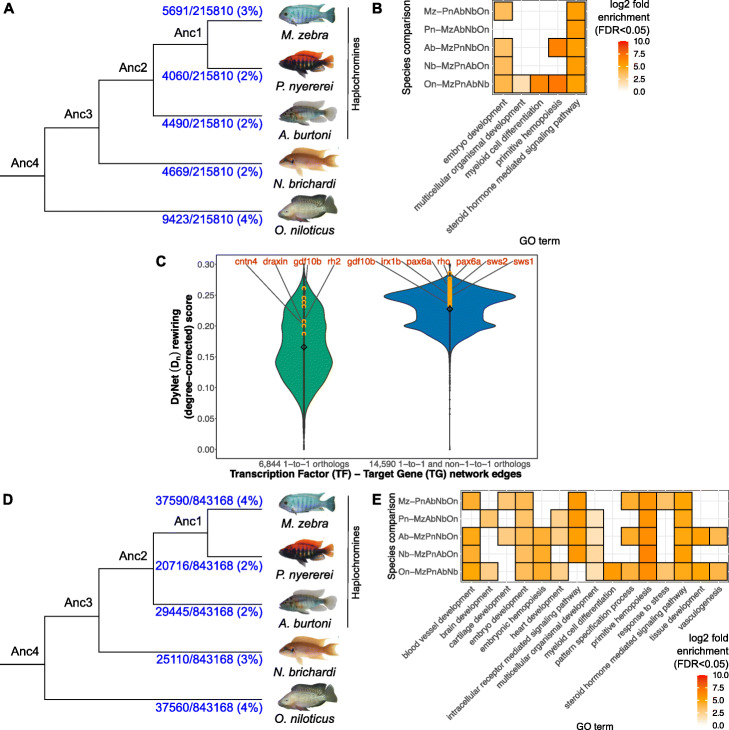Fig. 2.
Network rewiring between species including TFs state changing co-expression module assignment and their targets (TGs). a Rewiring events linked to module assignment state changes of TFs in 215,810 TF-TG 1-to-1 edges (FDR < 0.05) of each species in the cichlid phylogeny compared to the other four species (see Additional file 1 for other FDR thresholds). b GO term enrichment of the 50–70 TFs that are rewired and state changed, and their associated TGs in one “focal” species vs the other four species (4060-9423/215,810 TF-TG 1-to-1 edges, a) against a background of all module genes, shown as grid heatmap of log10 fold enrichment (legend on right, FDR < 0.05). c Violin plots of DyNet (Dn) rewiring score (degree-corrected) from 6844 1-to-1 orthologs in 215,810 TF-TG network edges (green, left violin) and 14,590 1-to-1 and many-to-many orthologs in 843,168 TF-TG network edges (blue, right violin). Mean rewiring score shown within each plot (white diamond). Degree-corrected rewiring score shown for non-candidate genes (black dots through center) and candidate morphogenetic trait genes (orange dots) with rewiring scores higher than the mean, and selected candidate examples are demarcated within. d Rewiring events linked to module assignment state changes of TFs in 843,168 TF-TG all edges of each species in the cichlid phylogeny against the other four species. e GO term enrichment of 100–140 rewired and state changed TFs and their associated TGs in each focal species vs the other 4 species (20,716-37,590/843,168 edges TF-TG all edges, d) against a background of all module genes, shown as grid heatmap of log10 fold enrichment (legend on right, FDR < 0.05)

